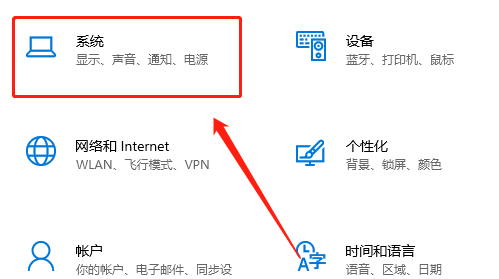The idea of implementing SSO across main domains
There are many ways to share SESSION data among multiple servers under the same main domain (ie: all subdomain names under the same first-level domain name), so I won’t go into details here!
The key issue now is the implementation of SSO in different main domains! This problem is relatively complex and can be implemented, but many of it is supported by some special software systems. . .
Actually, SESSION also needs COOKIE to support it. COOKIE does not support cross-main domain, which means that SESSION cannot cross main domain! So, how to achieve cross-main domain? ? ?
This is another simple method that suddenly came to my mind when I was implementing SSO in my project, for everyone to discuss
1. Assume that there are A.COM, B.COM, C Among the three main domains of .COM, A.COM is mainly responsible for verifying passes (faster), B.COM and C.COM are specific applications
2. B.COM and C.COM and Some of A.COM's own applications need to go to A.COM to gain trust (login)
3. Assign a subdomain passport.B.COM, passport.C.COM to each main domain, and their IPs All point to the host address where A.COM is located
4. After the user passes the login verification, set up a jump rule, using session_id as a parameter, to jump to passport.B.COM, passport.C.COM one by one ( In fact, these subdomains can be established to the default site of host A, and quick jumps can be achieved one by one through arrays and some parameters). The jumps can be made directly using PHP's header("Location: passport.B.COM/?sid=xxxxxxxx&i= 0"); , while jumping, just overwrite the session_id of the current main domain with the passed session_id.
Here are some considerations:
1. Allocating each passport. . .
2. Jumping on the same host can avoid errors in the intermediate jump link causing jump failure.
I have only tested it on the local simulated multi-master domain, and the effect is good; I have not tested it on the INTERNET network yet. Please try it when you have time and come up with a better SSO solution.. .
 如何在PHP中实现SEO优化May 20, 2023 pm 01:30 PM
如何在PHP中实现SEO优化May 20, 2023 pm 01:30 PM随着互联网的发展,SEO(SearchEngineOptimization,搜索引擎优化)已经成为了网站优化的重要一环。如果您想要使您的PHP网站在搜索引擎中获得更高的排名,就需要对SEO的内容有一定的了解了。本文将会介绍如何在PHP中实现SEO优化,内容包括网站结构优化、网页内容优化、外部链接优化,以及其他相关的优化技巧。一、网站结构优化网站结构对于S
 如何在PHP中实现ERP系统May 20, 2023 pm 06:21 PM
如何在PHP中实现ERP系统May 20, 2023 pm 06:21 PM随着电子商务和企业管理的发展,许多企业开始寻找更好的方法来处理其日常业务流程。ERP系统是一种能够整合企业各种业务流程的软件工具。它提供了全面的功能,包括生产、销售、采购、库存、财务等方面,帮助企业提高效率、控制成本和提高客户满意度。而在PHP编程语言中,也能够实现ERP系统,这就需要我们掌握一些基本的知识和技术。下面,我们将深入探讨如何在PHP中实现ERP
 windows10家庭版如何加入域Jan 12, 2024 am 11:57 AM
windows10家庭版如何加入域Jan 12, 2024 am 11:57 AM在组织管理及应对网络安全方面,投身于拥有域的环境的确能带给你无比的便捷优势。然而,部分的IT专家或相关从业者可能会对如何将Windows10操作系统的计算机成功地融入至域中感到困惑不解。接下来,我将为您详尽解读这一过程中涉及到的所有具体步骤与实用技巧。windows10家庭版如何加入域1、点击电脑开始,然后点击设置进入2、再点击“系统”3、往下找到“关于”3、再点击这里的加入域4、按照提示输入就可以了。
 在PHP中如何实现物联网开发?May 12, 2023 am 11:51 AM
在PHP中如何实现物联网开发?May 12, 2023 am 11:51 AM随着物联网技术的发展和普及,越来越多的应用场景需要使用PHP语言进行物联网开发。PHP作为一种广泛应用于Web开发的脚本语言,它的易学易用、开发速度快、可扩展性强等特点,使其成为开发物联网应用的一种优秀选择。本文将介绍在PHP中实现物联网开发的常用技术和方法。一、传输协议和数据格式物联网设备通常使用TCP/IP或UDP协议进行数据传输,而HTTP协议是一个优
 如何在PHP中实现CRM系统May 20, 2023 pm 12:31 PM
如何在PHP中实现CRM系统May 20, 2023 pm 12:31 PM随着企业的发展,客户管理变得越来越重要。为了提高客户满意度和忠诚度,越来越多的企业采用客户关系管理系统(CRM)来帮助其管理客户关系。而PHP是一种流行的编程语言,因其简单易学、灵活和强大而被广泛应用于Web开发。那么,如何在PHP中实现CRM系统呢?本文将为您介绍实现CRM系统的步骤和技巧。Step1:需求分析在开始开发CRM系统之前,您需要进行需求分析
 win10加入域找不到网络路径如何解决Feb 23, 2024 pm 05:01 PM
win10加入域找不到网络路径如何解决Feb 23, 2024 pm 05:01 PM为了方便管理电脑和解压资源,不少win10用户选择将多个电脑组建为一个域,但是有很多人想要加入域却找不到进入的网络路径,今天小编为大家带来win10加入域找不到网络路径解决方法。win10加入域找不到网络路径如何解决1、首先需要检查服务是否正常启动,如果主要的两个赋予已经启动,只需要将messenager,alerter启动就可以了。主要检查服务为computerbrower,remoteprocedure(RPC),tcp/ipnetbioshelper,windowsmanagementin
 如何在PHP中实现验证码May 20, 2023 am 11:31 AM
如何在PHP中实现验证码May 20, 2023 am 11:31 AM随着互联网的不断发展,越来越多的网站需要使用验证码来保证安全性。验证码是一种借助人类能力而无法被计算机破解的认证技术,广泛应用于网站注册、登录、找回密码等功能中。下面将介绍如何使用PHP实现验证码功能。一、生成验证码图片验证码图片的生成是验证码功能的核心,需要生成一个随机字符,并将其渲染为图像展示给用户。在PHP中,可以使用GD库来生成图片。GD库是一种用于
 如何在PHP中实现管家婆系统?May 12, 2023 am 08:12 AM
如何在PHP中实现管家婆系统?May 12, 2023 am 08:12 AM管家婆系统在现代企业管理中扮演着重要的角色,它不仅仅能够有效地提高企业的工作效率,还可以大大提高了企业的生产力和竞争力。与此同时,PHP作为一种广泛使用的动态脚本语言,也受到了许多企业的青睐。接下来,我们将探讨如何在PHP中实现管家婆系统,以提高企业的管理效率。一、了解管家婆系统管家婆系统是一种企业管理软件,主要用于管理公司的财务、销售、采购、仓库、人力资源


Hot AI Tools

Undresser.AI Undress
AI-powered app for creating realistic nude photos

AI Clothes Remover
Online AI tool for removing clothes from photos.

Undress AI Tool
Undress images for free

Clothoff.io
AI clothes remover

AI Hentai Generator
Generate AI Hentai for free.

Hot Article

Hot Tools

SublimeText3 Chinese version
Chinese version, very easy to use

SublimeText3 Mac version
God-level code editing software (SublimeText3)

MantisBT
Mantis is an easy-to-deploy web-based defect tracking tool designed to aid in product defect tracking. It requires PHP, MySQL and a web server. Check out our demo and hosting services.

Dreamweaver CS6
Visual web development tools

DVWA
Damn Vulnerable Web App (DVWA) is a PHP/MySQL web application that is very vulnerable. Its main goals are to be an aid for security professionals to test their skills and tools in a legal environment, to help web developers better understand the process of securing web applications, and to help teachers/students teach/learn in a classroom environment Web application security. The goal of DVWA is to practice some of the most common web vulnerabilities through a simple and straightforward interface, with varying degrees of difficulty. Please note that this software






